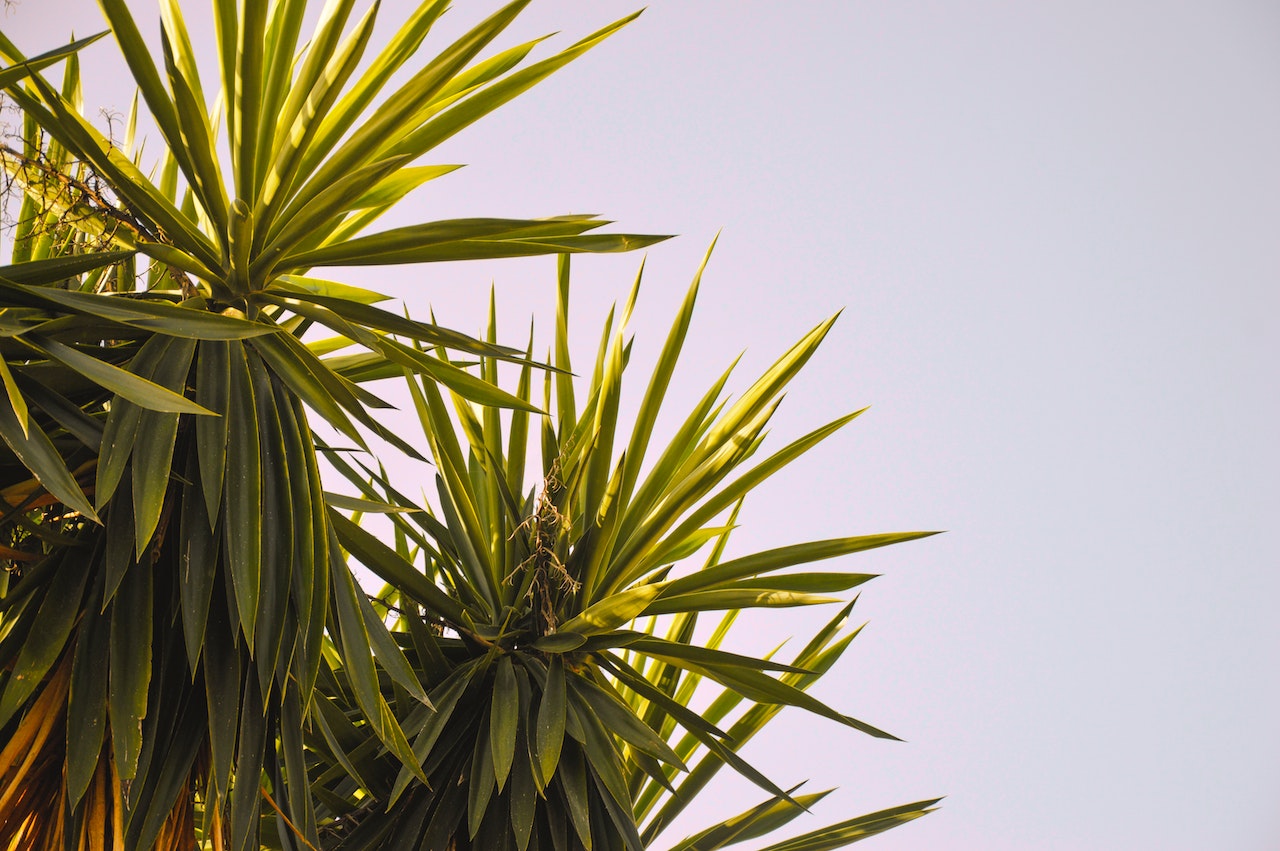The Yucca Plant is gorgeous, with its unique sword-like leaves. Plus, it’s wonderfully low maintenance, making it even more attractive to plant moms and dads. Depending on the variety, you’ll have beautiful tree-like foliage indoors if you grow a Yucca as a houseplant.
In this post, we’ll discuss a few things you need to know about the Yucca Plant. It’s not a guide. Yet. But keep posted because we’ll have one real soon.
What is Yucca Plant?
Yucca Plant is not a single species of plant. It’s actually an entire genus of shrubs and trees, with about 40 to 50 species. As you can imagine, the appearance of the Yucca Plant varies, but the species do share a similar trait: evergreen, pointed leaves that grow in rosettes.
Among the most popular species is Yucca gigantea, which you may have already seen as a houseplant yucca, grown both indoors and outdoors. Other well-known home garden species include the Spanish dagger (Yucca gloriosa) and Spanish Bayonet (Yucca aloifolia).
The Joshua Tree is also popular not as a houseplant but as a desert tree with typical cactus-like qualities. It’s also technically a yucca plant, with the scientific name Yucca brevifolia.
Where Does Yucca Plant Grow?
Several species of Yucca grow extensively throughout Mexico, even reaching Guatemala. They grow naturally in some parts of California, including other southwestern and central states in the US, and even as far as the southern areas of Canada.
Yucca Plants thrive almost anywhere, in different climates and terrains. Generally, they seem to prefer arid environments naturally.
Can Yucca Plant Live Outside?
Yucca Plants naturally thrive in dry and relatively harsh conditions. So, yes, they can grow outdoors in full sun, given that the soil drains well.
They fairly tolerate drought and actually don’t need much watering. This said, they are sensitive to soggy soil and might not do well in a rainy, highly humid environment.
Can Yucca Plant Survive Winter?
Yes, some Yucca species can survive winter.
Yuccas are tough plants. Remember that they naturally grow in deserts and arid land, where temperatures fluctuate day and night. They can endure temperatures as low as 10 degrees Fahrenheit.
However, winter with snow is a different story. Some Yucca species require extra protection during the winter, while others would seem dead (and might actually really die) when exposed to snow. But others are resilient enough for regrowth in the offshoots.
Can Yucca Plant Live in Water?
Yucca plants ideally can’t survive with just water alone. They don’t need much water to survive to begin with. So, overexposure to excess moisture makes them sick.

When Do Yucca Plants Bloom?
Yuccas bloom from April to June, in the late spring and summer. Bloom stalks typically grow during the warmest phase of the growing season, but each species differs slightly. One Yucca species (there might be others) is monocarpic, which means it blooms once and then dies.
Are Yucca Plants Toxic to Cats and Dogs?
Many Yucca species are potentially toxic to dogs and cats. When consumed by animals, they may exhibit symptoms such as vomiting, drooling, lack of coordination, weakness, and dilated pupils (a common sign in cats).
Note that this plant tends to pose more harm to large animals that unknowingly graze on Yucca regularly. When dogs and cats eat yucca, they typically experience mild vomiting and diarrhea. But the intensity of the symptoms varies, depending on the pets’ size and the amount of yucca ingested.
Can Yucca Plants Cause Rash?
Many yucca species have edible parts, usually fruit, flowers, stems, and seeds. They are typically not poisonous to humans but are potentially toxic to common house pets and other animals.
Although many yucca species are generally not poisonous to humans, they do pose a risk of injury. Some people may also exhibit allergy symptoms from certain yucca species in the form of a rash, especially when they touch the raw sap.
Are Yucca Plant Roots Invasive?
The roots of most Yucca plants are invasive. They can potentially cause problems for nearby plants and their roots if grown in the garden.
Yucca roots penetrate deeply into the soil, while smaller lateral roots stretch out in search of water and nutrients. So, if you’re growing Yucca as an ornamental plant, it might be a good idea to plant it in a pot.
Are Yucca Plant Roots and Flowers Edible?
Fruits, seeds, flowers, and blooms are edible parts of many Yucca species. However, most Yucca roots aren’t known to be edible. Learning more about the various yucca species before consuming any parts is worthwhile.
NOTE: Many people confuse Yucca roots with yuca, commonly known as cassava or manioc (Manihot esculenta).
Why Is My Yucca Plant Turning Yellow?
Yucca leaves turn yellow due to stress caused by overwatering and excessive moisture around the roots.
As houseplants that are grown both indoors and outdoors, they don’t require a lot of water to survive. They only need water when they’re mostly dry. When you water your yucca plant, ensure the water flows freely from the drainage. This, in turn, helps you check that the soil isn’t retaining too much moisture.


Leave a comment
This site is protected by hCaptcha and the hCaptcha Privacy Policy and Terms of Service apply.